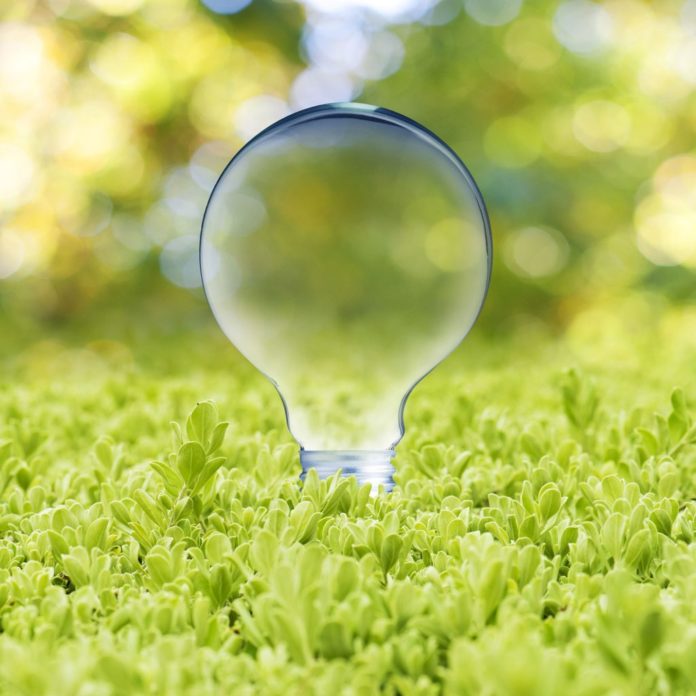Improving Light Efficiency with LEDs
With competition growing and cannabis prices continuing to fall, it is vital that your grow operation is as efficient as possible. Nothing will have a larger impact than your choice in lighting. Not only does your light system consume energy, but the efficiency of the system determines how much heat is released into your facility and the size of the HVAC system required to maintain an ideal climate. However, in order to make the best choice, it is important to understand how light affects plants and what technologies are the most effective for horticulture.
To begin, what is light? Light consists of particles of energy called photons. Each photon has a specific energy and corresponding wavelength, with the lower energy levels having higher wavelengths. This means that all photons of the same wavelength have the same energy, no matter what the source. Since, all photons move at the same speed (186,282 miles per second) and in a straight trajectory, we are able to accurately measure the photon output of individual light sources. The unit of measurement signifying the number of photons emitted is called the micromole (umol) and equals 6.022 x 1017 photons. At the peak of summer, the highest level of photons received at the earth’s surface is around 2,000 umols per square meter (about 10.77 square feet) each second. In other words, hundreds of trillions of photons cover a square millimeter each second.
Plants harness these tiny energy packets through pigments distributed within their leaves. When a photon interacts with a plant pigment, the energy can either be reflected or absorbed. There are many factors that determine the outcome, but generally speaking, a photon is absorbed when its energy level is slightly higher than the energy required to excite an electron within the molecule to a higher orbit. These compatible energy levels can be seen as peaks in the spectral absorption charts. What quickly becomes apparent is that most of the pigments only absorb photons in the higher energy violet and blue regions of the visible spectrum (400 – 500nm).
The question then begs, if the vast majority of photons produced by a high pressure sodium (HPS) bulb do not have the correct energy levels, why have they been the preferred bulb for horticulture? This is where plant biology, quantum mechanics, and simple economics come into play. First, chlorophylls a & b are the dominant pigments in both the number of molecules and importance in the photosystems. Since they are able to absorb photons near the red region of the visible spectrum, they can utilize the higher energy photons produced by an HPS bulb through a phenomenon known as Raman scattering. A simplified explanation of Raman scattering is that photons shed very small amounts of energy (equivalent to thousands of a nanometer) as they collide with matter and change direction. While this effect is nominal in most environments, leaf optics are very effective at trapping photons and forcing them to bounce around billions of times per second, until either being absorbed by a pigment or dissipating as heat.
However, economics are what currently distinguishes HPS systems from better spectrum technologies. Double ended HPS fixtures are cheap to purchase and offer photon efficiencies of 25–30 percent, compared to 12-20 percent for metal halide (MH) and ceramic metal halide (CMH). However, the 400–500nm deficiency in the HPS spectrum has resulted in undesirable plant morphologies, such as wide leaves (reducing canopy penetration) and longer internodal lengths (creating tall and weak stalks). In an attempt to compensate, growers use higher power fixtures or supplement their spectrum with metal halide (MH) or ceramic metal halide (CMH) fixtures. Unfortunately, both these approaches cost more to implement and are not very energy efficient.
Efficiency is where LEDs offer significant advantages. The latest royal blue LEDs (450 nm) are 40-50 percent efficient at converting electricity to photons, depending on the manufacturer. In addition, the narrow range of photons produced by these diodes are perfectly in tune with the primary absorption peaks for chlorophyll b and most other major pigments. If balanced properly, higher levels of 450 nm photons can be applied to the canopy, since the fluorescent properties of chlorophyll b result in red photons (648 nm) being emitted and utilized by nearby chlorophyll a molecules. This dynamic is most likely why these two pigments form the basis of all plants.
Blue LEDs can also be used as the primary light source if phosphors are utilized to convert these photons into a wide spectrum light. This approach balances the light profile to reduce photoinhibition and photobleaching, while offering a total fixture efficiency of 30–40 percent. Until recently, LEDs have been dismissed because of their price. However, there are some exciting products about to be released which reduce the buildout cost of an LED based facility to around the same price as a traditional HPS facility, while offering more than double the efficiency and very little maintenance cost. We will explore one such system next month.
Nick D’Onofrio is the CEO of HYDRALED, an agricultural lighting company focused on maximizing total facility efficiency. The company’s patent pending LED fixture utilizes a closed-loop liquid cooling system to maintain optimal temperatures for both the lighting system and the grow room, reduces equipment and operating costs, and allows for the repurposing of waste heat.











